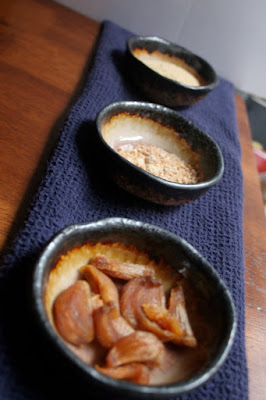SideKIC: Sous Vide Review (Accuracy/Stability)
Welcome to the third part of my ongoing review of the SideKIC. The first piece covered SideKIC esthetics, the second part covered SideKIC usage and now we are going to talk about the initial heat up times, the temperature accuracy and temperature stabilization (what happens when we introduce cold product to the water bath).
Conclusion
The initial heatup can be time consuming, but the accuracy and stability is totally fine for most home use. You might want to be careful about adding too much frozen product, because I assume if you lower the temperature of the water bath too low you are going to experience a fairly significant stabilization time as the heater will be working overtime to get back up to temperature.
Initial Heatup
The first thing I wanted to understand was how long it would take for the SideKIC to bring a water bath up to temperature. I am less interested in being mathematically precise and more interested in what this would be like for someone who was new to sous vide cooking. I added 6.25 quarts of hot tap water to a stockpot. This amount happened to be what it took to get the water levels to the correct place on the SideKIC (between the first and second windows).
I turned on the device, and set the the temperature to 155ºF. The SideKIC read the initial water temperature as 129ºF. To be honest, I don't actually do much cooking in the 155 temperature range. I am usually doing sub 140ºF or over 170ºF temperatures. With an uncovered and uninsulated stockpot, it took 32 minutes to come up to temperature.
Overall, the time it took to come up to temperature was longer than what I have experienced with other equipment, but it wasn't unreasonable. This can also be mitigated by adding hot water from a tea kettle to bring the water bath up faster.
Accuracy
Using an external thermometer, I tested multiple spots in the bath for temperature variance, and found that overall the SideKIC kept temperatures to within .7ºF. For 99% of the cooking you are likely to do, I think this is totally acceptable. It is also important to note that there are limitations in accuracy with thermometers, and the temperature range didn't exceeded the margin of error.
Overall, the time it took to come up to temperature was longer than what I have experienced with other equipment, but it wasn't unreasonable. This can also be mitigated by adding hot water from a tea kettle to bring the water bath up faster.
Accuracy
Using an external thermometer, I tested multiple spots in the bath for temperature variance, and found that overall the SideKIC kept temperatures to within .7ºF. For 99% of the cooking you are likely to do, I think this is totally acceptable. It is also important to note that there are limitations in accuracy with thermometers, and the temperature range didn't exceeded the margin of error.
Stabilization
My stability test was to use the SideKIC to heat up and stabilize a six quart water bath at 140ºF. Once stabilized I added a hunk of frozen beef. By hunk, I mean, 430 grams of 2.5" thick chuck roast, that had been hiding in my freezer for quite some time. After I added the beef, the temperature in the water bath dropped down to 136ºF. It took about nine minutes for the water bath to return to 140ºF. After that, the SideKIC overshot by about .6ºF. It took about another ten minutes to stabilize. I never observed the temperature of the water bath get much more than .6 degrees off. Which, again, with the margin of error for my thermometer. Obviously, adding more frozen product might impact both the bounce back time as well as the degree of temperature overshoot.
Conclusion
The initial heatup can be time consuming, but the accuracy and stability is totally fine for most home use. You might want to be careful about adding too much frozen product, because I assume if you lower the temperature of the water bath too low you are going to experience a fairly significant stabilization time as the heater will be working overtime to get back up to temperature.
Notes
I cannot guarantee that my results will match anyone else's results. I did my best to perform tests in a way that would be accurate and make sense to readers of this blog. If you think I should have done things differently, let me know!
Product: SideKIC Immersion Circulator
Manufacturer: ICA Kitchen, LLC
Available at Amazon.com
I cannot guarantee that my results will match anyone else's results. I did my best to perform tests in a way that would be accurate and make sense to readers of this blog. If you think I should have done things differently, let me know!
Product: SideKIC Immersion Circulator
Manufacturer: ICA Kitchen, LLC
Available at Amazon.com




Comments
Post a Comment